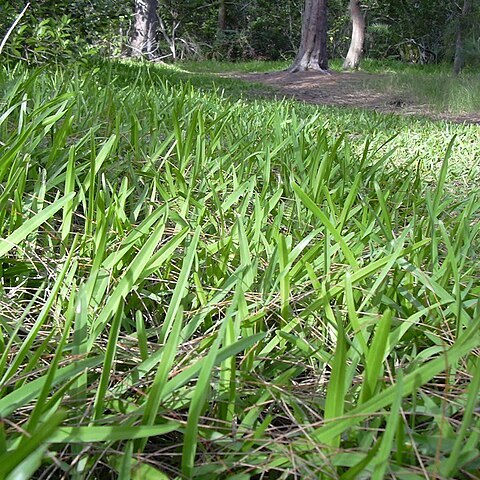Annuals or perennials, stoloniferous. Leaf blades linear to narrowly lanceolate; ligule ciliate. Inflorescence of very short racemes bearing a few sessile spikelets; racemes arranged singly and sunk in pockets on one or both sides of a foliaceous or corky axis, variously disarticulating at maturity, raceme rachis ending in a point. Spikelets ovate-lanceolate to lanceolate; glumes both short or the upper equal to spikelet, membranous; lower floret staminate or neuter, lemma as long as the spikelet, usually coriaceous, rarely papery, smooth, acute; upper lemma slightly shorter than lower lemma, papery, rarely coriaceous, margins flat. x = 9.
Spikelets sessile or subsessile, solitary in two rows on one side of a flattened rachis, the racemes reduced to 1-3 spikelets, the rachis produced beyond the upper spikelet, the prolongation about as long as the spikelet, the short racemes inbedded (in our species) on one side of a thickened corky axis; first glume about one-fourth as long as the spikelet; second glume and sterile lemma equal, pointed beyond the fruit, acuminate, 5-nerved, the lemma enclosing a palea or staminate flower; fruit acute, chartaceous, the margins of the lemma thin, not inrolled.
Inflorescence of very short racemes bearing a few single spikelets and sunk in pockets on one or both sides of a foliaceous or corky axis, falling entire or fracturing into irregular segments at maturity, the raceme rhachis ending in a point.
Inferior lemma coriaceous; superior lemma chartaceous with flat margins.
Glumes both short, or the superior as long as the spikelet.
Spikelets abaxial.

